Lei A Jiang
age ~54
from Camas, WA
- Also known as:
-
- Lei Jaing
- Phone and address:
- 946 NW Grand Ridge Dr, Camas, WA 98607
Lei Jiang Phones & Addresses
- 946 NW Grand Ridge Dr, Camas, WA 98607
- Vancouver, WA
- 18545 Matthew Ct, Beaverton, OR 97007
- Aloha, OR
- Ann Arbor, MI
Medicine Doctors

Lei Jiang
view sourceSpecialties:
Ophthalmology
Work:
California Eye & Ear Specialist
2400 N Broadway, Los Angeles, CA 90031
(323)2216186 (phone), (323)2210738 (fax)
2400 N Broadway, Los Angeles, CA 90031
(323)2216186 (phone), (323)2210738 (fax)
Education:
Medical School
University of Maryland School of Medicine
Graduated: 2009
University of Maryland School of Medicine
Graduated: 2009
Conditions:
Cataract
Diabetic Retinopathy
Glaucoma
Keratitis
Macular Degeneration
Diabetic Retinopathy
Glaucoma
Keratitis
Macular Degeneration
Languages:
Chinese
English
Russian
Spanish
Vietnamese
English
Russian
Spanish
Vietnamese
Description:
Dr. Jiang graduated from the University of Maryland School of Medicine in 2009. He works in Los Angeles, CA and specializes in Ophthalmology. Dr. Jiang is affiliated with San Gabriel Valley Medical Center.

Lei Jiang
view sourceSpecialties:
Cardiovascular Disease
Work:
California Cardiovascular Consultants & Medical AssociatesCalifornia Cardiovascular Consultants
2333 Mowry Ave STE 300, Fremont, CA 94538
(510)7960222 (phone), (510)7967760 (fax)
2333 Mowry Ave STE 300, Fremont, CA 94538
(510)7960222 (phone), (510)7967760 (fax)
Languages:
Arabic
Chinese
English
Spanish
Tagalog
Vietnamese
Chinese
English
Spanish
Tagalog
Vietnamese
Description:
Ms. Jiang works in Fremont, CA and specializes in Cardiovascular Disease. Ms. Jiang is affiliated with Eden Medical Center, Saint Rose Hospital, Seton Medical Center and Washington Hospital.

Lei Jiang
view sourceUs Patents
-
Minimization Of Microelectronic Interconnect Thickness Variations
view source -
US Patent:6883153, Apr 19, 2005
-
Filed:Jan 10, 2003
-
Appl. No.:10/340534
-
Inventors:Lei Jiang - Camas WA, US
Sadasivan Shankar - Cupertino CA, US -
Assignee:Intel Corporation - Santa Clara CA
-
International Classification:G06F017/50
-
US Classification:716 6, 716 5, 716 19, 716 20
-
Abstract:An efficient TCAD tool to analyze the variation of topography and thickness of interconnects and components of integrated circuits introduced by multiple-layer chemical-mechanical planarization (CMP). Contact stress distribution is determined on all scales as a function of topography. A formulation is used relating the pad deformation and therefore stress directly to pattern topography ({d}), and the pad mechanical properties. The 3-dimensional stress and deformation field is described, along with representation of the statistical pad roughness and slurry thickness information. These process conditions are also functions of the surface topography and contact regimes. The stress-topography relationship is represented as [A]{P}={d}, where [A] is the influence coefficient matrix determined by the contact mechanics, and {P} and {d} represent local stress and topography on patterns. With given initial topography and slurry rate kinetics, the surface evolution at each time step of CMP can be traced iteratively to obtain post-CMP topography.
-
Polishing Pad Design
view source -
US Patent:6887131, May 3, 2005
-
Filed:Aug 27, 2002
-
Appl. No.:10/228094
-
Inventors:Lei Jiang - Aloha OR, US
Sadasivan Shankar - Cupertino CA, US
Paul Fischer - Portland OR, US -
Assignee:Intel Corporation - Santa Clara CA
-
International Classification:B24B009/00
-
US Classification:451 28, 451 54, 451 41
-
Abstract:A method is provided for creating a polish pad. This may involve determining a design layout of a wafer. The design layout may include a distribution of metal line features on the wafer. A polish pad design may be created/determined based on the determined layer. The polish pad may have asperities having a width greater than a width of metal line features of the wafer.
-
Rinse Apparatus And Method For Wafer Polisher
view source -
US Patent:6908370, Jun 21, 2005
-
Filed:Dec 4, 2003
-
Appl. No.:10/728550
-
Inventors:Lei Jiang - Camas WA, US
Jin Liu - Albuquerque NM, US
Sadasivan Shankar - Cupertino CA, US
Thomas Bramblett - Banks OR, US -
Assignee:Intel Corporation - Santa Clara CA
-
International Classification:B24B001/00
-
US Classification:451 60, 451444, 451446
-
Abstract:An apparatus for polishing a wafer comprising a rotatable polishing pad having a center of rotation and a rinse delivery conduit positioned adjacent to the polishing pad and substantially in radial alignment with the center. The rinse delivery conduit includes a plurality of nozzles to dispense a rinsing liquid. In one embodiment, the plurality of nozzles are configured and positioned to generate a higher flow rate of the rinsing liquid at the end of the rinse delivery conduit proximate to the center than at the end of the rinse delivery conduit distal to the center. In another embodiment, the rinse delivery conduit has a proximal end which is substantially adjacent the center and the distal end which is approximately adjacent an outer periphery of the pad.
-
Rinse Apparatus And Method For Wafer Polisher
view source -
US Patent:7021999, Apr 4, 2006
-
Filed:Apr 5, 2005
-
Appl. No.:11/099926
-
Inventors:Lei Jiang - Camas WA, US
Jin Liu - Albuquerque NM, US
Sadasivan Shankar - Cupertino CA, US
Thomas Bramblett - Banks OR, US -
Assignee:Intel Corporation - Santa Clara CA
-
International Classification:B24B 1/00
-
US Classification:451 60, 451444, 451446
-
Abstract:An apparatus for polishing a wafer comprising a rotatable polishing pad having a center of rotation and a rinse delivery conduit positioned adjacent to the polishing pad and substantially in radial alignment with the center. The rinse delivery conduit includes a plurality of nozzles to dispense a rinsing liquid. In one embodiment, the plurality of nozzles are configured and positioned to generate a higher flow rate of the rinsing liquid at the end of the rinse delivery conduit proximate to the center than at the end of the rinse delivery conduit distal to the center. In another embodiment, the rinse delivery conduit has a proximal end which is substantially adjacent the center and the distal end which is approximately adjacent an outer periphery of the pad.
-
Using Benzocyclobutene Based Polymers As Underfill Materials
view source -
US Patent:20040159923, Aug 19, 2004
-
Filed:Feb 15, 2003
-
Appl. No.:10/367266
-
Inventors:Sergei Skokov - San Jose CA, US
Lei Jiang - Aloha OR, US
Sadasivan Shankar - Cupertino CA, US -
International Classification:H01L023/02
-
US Classification:257/678000
-
Abstract:A cyclotene chemical structure may be modified to reduce its curing temperature. With the reduced curing temperature, the material may be highly advantageous as an underfill material for surface nonpackaging.
-
Using Benzocyclobutene Based Polymers As Underfill Materials
view source -
US Patent:20050054143, Mar 10, 2005
-
Filed:Sep 10, 2004
-
Appl. No.:10/939226
-
Inventors:Sergei Skokov - San Jose CA, US
Lei Jiang - Aloha OR, US
Sadasivan Shankar - Cupertino CA, US -
International Classification:H01L021/44
H01L021/48
H01L021/50
H01L023/02 -
US Classification:438123000
-
Abstract:A cyclotene chemical structure may be modified to reduce its curing temperature. With the reduced curing temperature, the material may be highly advantageous as an underfill material for surface nonpackaging.
-
Copper Containing Abrasive Particles To Modify Reactivity And Performance Of Copper Cmp Slurries
view source -
US Patent:20060138087, Jun 29, 2006
-
Filed:Dec 29, 2004
-
Appl. No.:11/026322
-
Inventors:Harsono Simka - Saratoga CA, US
Sadasivan Shankar - Cupertino CA, US
Lei Jiang - Camas WA, US
Paul Fischer - Portland OR, US
Anne Miller - Portland OR, US
Kenneth Cadien - Portland OR, US -
International Classification:C09K 13/00
C03C 15/00
H01L 21/302
B44C 1/22 -
US Classification:216088000, 438692000, 252079100, 216089000
-
Abstract:A slurry for use in a chemical mechanical polishing process for planarizing copper-based metal structures on a substrate comprises an oxidizer, an organic complexing agent, surfactants, and a plurality of copper-based metal abrasive particles, wherein the copper in the copper-based metal is capable of dissolving into the slurry and forming copper ion complexes. During the chemical mechanical polishing process, the copper removal rate may be selectively increased by increasing the concentration of copper metal abrasive particles in the slurry, and the copper removal rate may be selectively decreased by decreasing the concentration of copper metal abrasive particles in the slurry.
-
Ultrasonic Electropolishing Of Conductive Material
view source -
US Patent:20080213995, Sep 4, 2008
-
Filed:Mar 2, 2007
-
Appl. No.:11/713215
-
Inventors:Tatyana N. Andryushchenko - Portland OR, US
Radek P. Chalupa - Hillsboro OR, US
Anne E. Miller - Portland OR, US
Lei Jiang - Camas WA, US -
International Classification:H01L 21/44
C25D 17/00 -
US Classification:438653, 204194, 257E2104
-
Abstract:In one embodiment, the present invention includes a method for forming a dielectric layer on a semiconductor wafer and patterning at least one opening in the dielectric layer, depositing a barrier layer over the dielectric layer, depositing a conductive layer over the barrier layer, and electropolishing the conductive layer while ultrasonically agitating the semiconductor wafer until a predetermined amount of the conductive layer remains over the barrier layer. Other embodiments are described and claimed.
Name / Title
Company / Classification
Phones & Addresses
COQUITLAM U.S.A., LLC
ASIAN BUSINESS ASSOCIATION OF OHIO
OHIO LAKESIDE REGIONAL INVESTMENT CENTER, LLC
LEI JIANG LLC
WEBLUTION LLC
SHANGRILA OHIO LLC
License Records
Lei Jiang
License #:
168575 - Expired
Category:
MEDICINE
Issued Date:
Jan 7, 2011
Expiration Date:
Jun 30, 2012
Type:
POSTGRADUATE PHYSICIAN TRAINEE
Lei Jiang
License #:
185749 - Expired
Category:
MEDICINE
Issued Date:
Jun 28, 2010
Expiration Date:
Jun 30, 2011
Type:
POSTGRADUATE PHYSICIAN TRAINEE
Lei Jiang
License #:
MTL001184 - Expired
Category:
MEDICINE
Type:
MEDICAL TRAINING LICENSE I(A)
Resumes

Principal Engineer At Intel Corporation
view sourceLocation:
19750 northwest Phillips Rd, Hillsboro, OR 97124
Industry:
Semiconductors
Work:
Intel Corporation
Principal Engineer at Intel Corporation
Intel Corporation May 1998 - Feb 2013
Senior Staff Engineer
University of Michigan Nov 1997 - Apr 1998
Post-Doc Researcher, Name, Mech Engineering
Northwestern University Jul 1997 - Nov 1997
Post-Doc Fellow
Principal Engineer at Intel Corporation
Intel Corporation May 1998 - Feb 2013
Senior Staff Engineer
University of Michigan Nov 1997 - Apr 1998
Post-Doc Researcher, Name, Mech Engineering
Northwestern University Jul 1997 - Nov 1997
Post-Doc Fellow
Education:
University of Michigan 1994 - 1997
Doctorates, Doctor of Philosophy, Mechanical Engineering University of Houston 1992 - 1994
Master of Science, Masters, Civil Engineering Dalian University of Technology 1988 - 1992
Bachelors, Bachelor of Science, Engineering
Doctorates, Doctor of Philosophy, Mechanical Engineering University of Houston 1992 - 1994
Master of Science, Masters, Civil Engineering Dalian University of Technology 1988 - 1992
Bachelors, Bachelor of Science, Engineering
Skills:
Simulations
Semiconductors
Design of Experiments
Matlab
Reliability
Thin Films
Ic
Manufacturing
Materials Science
Thermal
Failure Analysis
Physics
Characterization
Maintenance& Reliability
Semiconductors
Design of Experiments
Matlab
Reliability
Thin Films
Ic
Manufacturing
Materials Science
Thermal
Failure Analysis
Physics
Characterization
Maintenance& Reliability
Interests:
Science and Technology
Education
Education

Lei Jiang
view source
Lei Jiang
view source
Lei Jiang
view source
Lei Jiang
view source
Lei Jiang
view sourceLocation:
United States

Sr. Staff At Intel Corp
view sourcePosition:
Sr. Staff at Intel Corp
Location:
Portland, Oregon Area
Industry:
Electrical/Electronic Manufacturing
Work:
Intel Corp
Sr. Staff
Sr. Staff
Education:
University of Michigan 1994 - 1997
Dalian University of Technology 1988 - 1992
Dalian University of Technology 1988 - 1992
Googleplus

Lei Jiang
Work:
Springer Science+Business Media - Marketing coordinator & Director Assistant (2010)
Molecular Diversity Preservation International - Managing editor (2008-2010)
Molecular Diversity Preservation International - Managing editor (2008-2010)
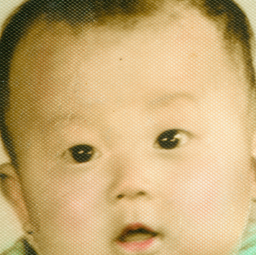
Lei Jiang
Education:
Northeastern University
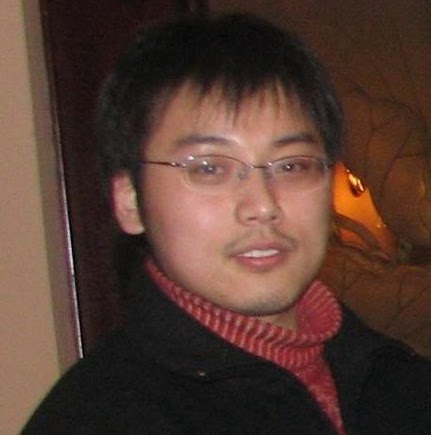
Lei Jiang
Tagline:
Mirimon, the Watcher
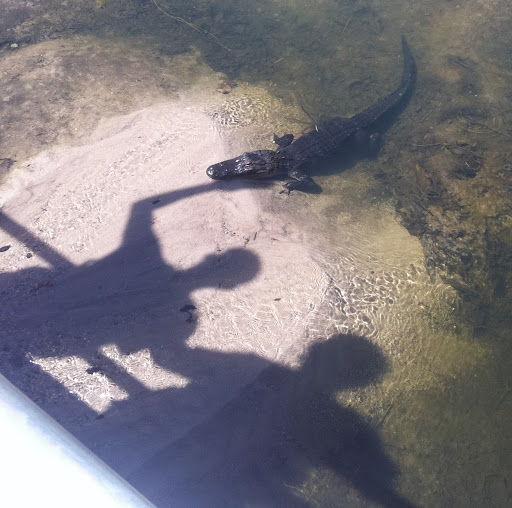
Lei Jiang
Tagline:
Home-addictive

Lei Jiang
About:
A sunshine chinese girl~

Lei Jiang

Lei Jiang
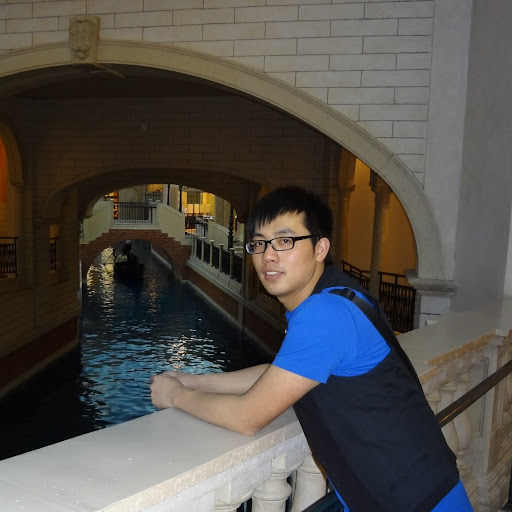
Lei Jiang
Myspace

Lei Jiang
view source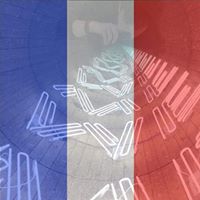
Lei JIang
view source
Lei Jiang
view source
Lei Jiang
view source
Lei Jiang
view source
Lei Jiang
view source
Lei Jiang
view source
Lei Jiang
view sourceClassmates

Lei Jiang
view sourceSchools:
university of AB Edmonton Azores 2008-2012
Community:
Leslie Armstrong, Paul Gutowski, John Paterson

Lei Jiang
view sourceSchools:
Beijing Bayi High School Beijing China 1992-1996

university of AB, Edmonto...
view sourceGraduates:
Jacksin Chamberlain (1980-1984),
Betty Keding (1974-1978),
Southgate Gate (2003-2007),
Lei Jiang (2008-2012)
Betty Keding (1974-1978),
Southgate Gate (2003-2007),
Lei Jiang (2008-2012)
Youtube
Flickr
Plaxo

lei jiang
view sourceGet Report for Lei A Jiang from Camas, WA, age ~54















